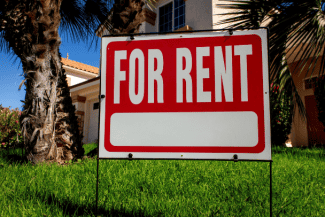Rent Reform: What Investors Need to Know

Oregon led the charge, but California and New York have also created new rent control rules this year. Other states — including Illinois, which banned rent control in 1997 — are considering statewide legislation.
Rent reform varies from state to state depending on the economy and the type of rental stock. But rental rules tend to center around two key issues: rent increases and eviction protections for tenants.
Rent increase limits are often tied to the current pace of economic growth. Rules regarding how much a landlord can increase the rent after a vacancy are often also part of the legislation.
The process of eviction is getting longer, too. Legislators are focused on limiting “no-cause” evictions and making sure tenants aren’t evicted simply because a landlord wishes to charge a higher rent.
Each state’s rules are different and only a few states are impacted right now. But landlords and investors need to know that rental controls may become more widespread.
Oregon sets a precedent
In 2019, Oregon became the first state to have statewide rent control. Under the new rules, rent increases are capped at 7% plus inflation during any 12-month period. Each year, the rent increase cap will be set by state economists. For the rest of 2019, it’s 10.3%. This applies only to buildings over 15 years old and excludes government-subsidized housing.
When units are vacant, landlords can increase the rent, but if a tenant doesn’t renew their lease after the first year, the rental cap stays in place. In most cases, landlords are free to increase rents if tenants leave of their own accord. If, however, a tenant is evicted without cause or their lease isn’t renewed after the first year, the rent increase cap stays in place.
The new laws also change the rules for no-cause evictions. Renters who have lived under a month-to-month lease for over a year are protected and the state requires a 60-day notice from the landlord. A 30-day notice is necessary for those who have lived in the unit for under a year. However, in Portland, a 90-day notice is always required.
Landlords can evict tenants for reasons including failure to pay rent or other legitimate violations. A landlord can also evict a renter with a 90-day notice at the end of the first year of tenancy. They can evict at any point if they’re moving a family member into the home or need to remodel the residence to make it safe for occupancy. If the landlord sells the property, they must pay the tenant one month’s rent as a contribution toward moving costs.
One important exclusion is that landlords who split a duplex with a tenant are exempt.
New York: rent control and rent stabilization
New York City is one of the world’s tightest housing markets and a challenge for landlords. There are two ways that New York City restricts what landlords can charge: rent control and rent stabilization. Rent control limits how much a unit can cost by setting a rent limit. Rent stabilization limits the amount that rent can increase.
Rent control became popular in New York during the last century, but has now dwindled. Rent control only applies to buildings built before 1947. In order to be eligible, the tenants or members of their family must have lived in the unit since July 1971. Families can give the unit to another family member. If there’s no member of the family who wants to move in, the property can fall out of the system. In New York City, there were once as many as two million rent-controlled apartments. There are less than 22,000 remaining.
Rent stabilization mostly applies to apartments in buildings with at least six units built between 1947 and 1974. It excludes condos and co-ops. However, just because one unit in a building is rent-stabilized doesn’t mean the whole building will be.
According to the NYC Rent Guidelines Board, a unit must meet a series of guidelines based on the amount of rent and the timing of when the tenant moved in to qualify for rent stabilization.
Each year, the city’s Rent Guidelines Board determines the percentage of increase for these buildings. For Oct. 2019 through Sept. 2020, rent increases in stabilized buildings were set at 1.5% for a one-year lease and 2.5% for a two-year lease. The Rent Guidelines Board maintains a list of all rent-stabilized apartments.
Under the new legislation, the Rent Guidelines Board continues to determine the rent increases. The new laws also remove a vacancy decontrol contingency that let rent-stabilized apartments revert to market-rate rent if there was a vacancy.
In the past, landlords could also raise rents by as much as 20% when tenants moved out, but the new rules have eliminated that. Landlords could also increase rents by as much as 6% for improvements that benefitted all tenants, but that has now been limited to 2%. Similarly, rent hikes for improvements in individual apartments are also limited.
Other loopholes, including deregulation for high-income tenants and multiple exemptions for owner usage, are also gone.
There are also protections that extend to all apartments. Security deposits are limited to one month’s rent. Tenants also have additional resources if they’re facing eviction. What this means for landlords is that evictions may take longer and landlords will have to go through some additional processes.
Landlords and real estate groups in New York City have fought the changes, saying that extensive rent stabilization will disincentivize landlords from investing in their buildings and ultimately end up hurting renters.
California: new rules exclude single-family rentals
Creating rent control for a state as vast as California is no easy task. While California voters said no to rent control last year, lawmakers didn’t give up, and the new legislation includes compromises on a few key issues. The rule, California Assembly Bill 1482, excludes cities that already have rent ordinances. That happens to include the two largest cities, San Francisco and Los Angeles.
In California, if a tenant has lived in a unit for 12 months, it becomes far more difficult to evict them and they can only be evicted if they:
- don’t pay rent,
- breach the lease in some other way,
- are involved in criminal activity on the property, or
- cause some other public nuisance.
Landlords can also evict if their immediate family will occupy the unit or if it’s being converted into a condominium. The landlord must pay the tenant’s relocation cost.
The legislation also doesn’t allow any California cities to create an annual rent control cap lower than 5% plus inflation. Single-family homes and condos are exempt from rent control, protecting smaller real estate investors. The California Apartment Association didn’t oppose the bill, but the California Association of Realtors issued a statement saying the new rules don’t do enough to increase the supply of affordable rental housing.
What landlords need to keep in mind
Even if rent control isn’t an issue in your community yet, it may be coming. For landlords, it’s always important to stay aware of what’s happening in your community. Pay attention to the local news where your rental is located and attend town meetings if possible. As a real estate investor, you can make your voice heard.
City and state legislation tends to focus on two core issues: the cost of rent and the process of eviction. As you determine your budget and the rent you need to charge, know that city or state regulations may limit your rents now or in the future by updating legislation.
As we’ve seen with the examples above, most laws and ordinances aren’t universal — there are generally different rules depending on the size and age of the building. Know where your property falls with regard to your local legislation.
Eviction is never an easy process, but most laws favor tenants. As a landlord, you’ll need to understand the process in your area before you need to go through it. Documentation of reasons for eviction is critical. Keep as many records as possible documenting the situation. While it’s impossible to predict the future, one way to lessen your chances of having to evict a tenant is through careful screening.
Individual real estate investors can be an important part of the affordable housing crisis and by staying aware they can protect both themselves and their tenants.
Source: fool.com















 Accessibility
Accessibility